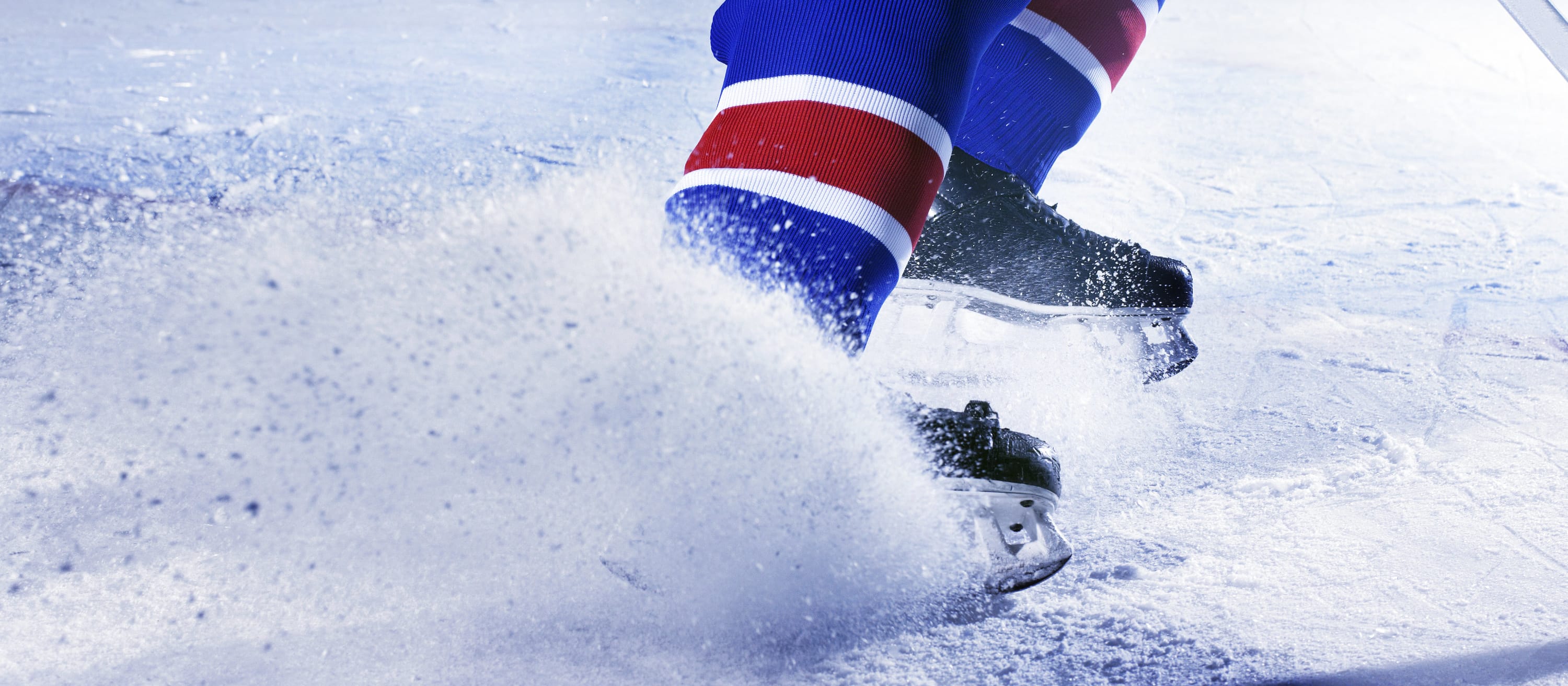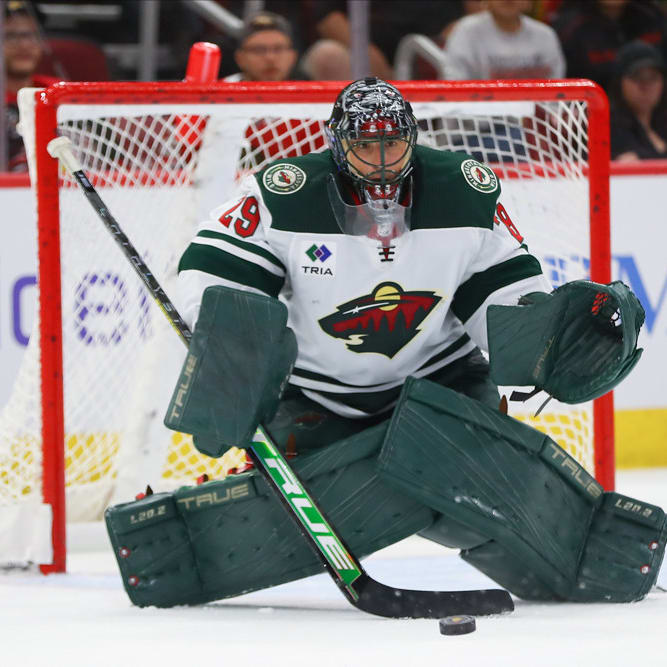This article is part of our Injury Analysis series.
Christmas gave everyone a nice break, but for the players below it was not necessarily a merry time of year.
Mike Mottau of the New York Islanders has a torn labrum in his right hip and will miss the rest of the season. This type of injury usually requires surgery, so a date for the procedure should be released soon. Rehabilitation post labral repair always starts with regaining full motion in the hip. The hip is a ball and socket joint, so one of its attributes is that it is extremely mobile. Any significant limitation in motion will affect the way other joints in the leg function and ultimately decrease athletic performance and potentially career longevity. Labrums can tighten up if motion is not achieved quickly, but on the other hand too much stretching can cause the hip to become loose. Once motion is achieved, hip strength and stability need to be regained. Rotation is extremely important, and the player's ability to control it in conjunction with linear motion is very important. The skating motion itself is not a straight motion but a rotational action directed in a straight line. Most motions are complex multi-directional actions, so retraining them can be arduous because it requires a serious commitment by both physical therapist and athlete. In the end, most players recover quite well and return to normal function.
Buffalo's Derek Roy will miss 4-to-6 weeks with a torn quad tendon. It's not clear if he will require surgery, but he will
Christmas gave everyone a nice break, but for the players below it was not necessarily a merry time of year.
Mike Mottau of the New York Islanders has a torn labrum in his right hip and will miss the rest of the season. This type of injury usually requires surgery, so a date for the procedure should be released soon. Rehabilitation post labral repair always starts with regaining full motion in the hip. The hip is a ball and socket joint, so one of its attributes is that it is extremely mobile. Any significant limitation in motion will affect the way other joints in the leg function and ultimately decrease athletic performance and potentially career longevity. Labrums can tighten up if motion is not achieved quickly, but on the other hand too much stretching can cause the hip to become loose. Once motion is achieved, hip strength and stability need to be regained. Rotation is extremely important, and the player's ability to control it in conjunction with linear motion is very important. The skating motion itself is not a straight motion but a rotational action directed in a straight line. Most motions are complex multi-directional actions, so retraining them can be arduous because it requires a serious commitment by both physical therapist and athlete. In the end, most players recover quite well and return to normal function.
Buffalo's Derek Roy will miss 4-to-6 weeks with a torn quad tendon. It's not clear if he will require surgery, but he will be out a while regardless. There will be scarring around the injury, so regaining normal muscle mobility will be important. A muscle or tendon that does not have its normal mobility or ability to glide on surrounding tissue will demonstrate impaired function. Once normal mobility is achieved, full motion in the knee and hip must also be regained. Muscles affected by the quad tendon are not limited to the knee alone but also directly affect hip function. The next step will be important strength and functional retraining. Through a graduated program, the leg will be trained to perform higher level tasks while increasing speed and power. Don't expect to see Roy back on the ice until sometime in February.
Colorado's Milan Hejduk missed seven games with a groin injury, but he was able to return to the ice for Monday's game against the Red Wings. Groin injuries can be touchy, but Hejduk did not report any issues after playing over 22 minutes Monday. The Avalanche will continue monitoring Hejduk to make sure he does not aggravate his injury, but at this point it looks like he is good to go.
Detroit's Pavel Datsyuk sustained a broken wrist/hand last Wednesday and is expected to be out roughly 4-to-6 weeks. He is in a cast right now and then will likely wear some sort of brace for support once the cast is removed. Don't be surprised if Datsyuk misses a bit more time than expected. The bone has to heal, and then Datsyuk will have to go through the process of regaining motion and strength so he can grip a stick and shoot. There have been instances where just getting enough strength to handle a puck and start shooting has taken a little longer than expected. Along with normal joint motion, Datsyuk will need to regain normal tendon function because immobilizing the wrist can decrease tendon gliding and grip strength. The speed of recovery will depend on when he is cleared to start moving the wrist and hand.
New Jersey's Zach Parise received some bad news recently. Originally expected to return in February, Parise will not even be allowed to skate until March. It appeared everything was going okay, but the new prognosis means he may wind up missing the rest of the season. It is not clear exactly what happened to change Parise's outlook, but the most reasonable guesses are the knee did not heal well after surgery or he re-injured it while rehabbing. This is big loss for the Devils and a difficult slot to fill. Hopefully we will learn more about Parise's situation in the next week or so.
Vancouver's Sami Salo will also be out a bit longer than expected. Salo, recovering from Achilles surgery, will not be allowed to skate with the team until the third week of January. The Canucks had hoped to have Salo back on the ice by January, but now it looks like a potential return to the lineup will not come until sometime in February. The most likely cause for the delay is an aggravation of the injury. The Achilles can be easily overworked because it needs to be very strong to control the way the leg functions in regards to the foot and ankle. Sometimes the hardest part of the rehab process comes near the end. Players tend to push themselves a bit more in anticipation of a return, which can sometimes cause the injured area to regress. As a Canucks fan, I hope Salo's further rehab goes well so he can get back on the ice sooner rather than later.
Lastly, Tampa Bay goalie Mike Smith has a "minor" sprain of his MCL. I don't like the term "minor" because I fear the player does not treat the injury with the respect he should. Everyone hears about ACL injuries, but in actuality the MCL gets damaged more often. The MCL doesn't make much noise, but it does a heck of a lot of work. The ligament needs extra support so it can heal. Then the surrounding muscles need to be strengthened and trained to help protect the MCL from re-injury. A healthy MCL is usually a sign of a healthy leg/hip. Freak injuries happen, but a strong MCL protects the knee from the repeated stress from skating. "Minor" injuries usually don't cost players much ice time, but failing to properly treat them can.









